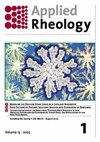新研制的含再生废大理石和氧化铋的聚酯材料辐射屏蔽性能的实验研究
IF 5.8
4区 工程技术
Q1 MECHANICS
引用次数: 1
摘要
摘要为了获得更好的防辐射性能,将40 wt%的聚酯和30 wt%的细废大理石与PbO (30 - 0) wt%和Bi2O3 (0-30) wt%混合制成一种新型聚酯。利用HPGe探测器测量了几种重要的屏蔽参数,如线性衰减系数(LAC)、半值层(HVL)、平均自由程(MFP)和有效原子序数(zeff)。并利用XCOM软件计算了理论值。为了验证实验设置,将实测的LAC和HVL等屏蔽参数与理论类似物进行了比较。在0.662 MeV能量下,制备的新聚酯的HVL和MFP表明,由聚酯(40 wt%)、细废大理石(30 wt%)、PbO (20 wt%)和Bi2O3 (10 wt%)组成的样品pwpbbi -10具有最佳的屏蔽能力。MFP行为表明,Bi2O3和PbO在这些新型聚酯上的比例直接影响其辐射屏蔽性能。值得注意的是,与其他研究样品相比,新聚酯PWPBi-10暴露的MFP值最低。综上所述,综合所测屏蔽参数,可以认为PWPBi-10样品在其余样品中具有最终的辐射扩散能力。本文章由计算机程序翻译,如有差异,请以英文原文为准。
An experimental investigation into the radiation-shielding performance of newly developed polyester containing recycled waste marble and bismuth oxide
Abstract To obtain better radiation shielding, a new polyester has been made by the combination of 40 wt% of polyester and 30 wt% of fine waste marble mixed along with PbO (30–0) wt% and Bi2O3 (0–30) wt%. A few significant shielding parameters such as linear attenuation coefficient (LAC), half-value layer (HVL), mean free path (MFP), and effective atomic number (Z eff) have been measured experimentally using an HPGe detector. Theoretical values have also been calculated using XCOM software. With the aim of validating the experimental setup, the measured shielding parameters, such as LAC and HVL, have been compared with their theoretical analogs. At 0.662 MeV energy, the prepared new polyester’s HVL and MFP exhibited that the sample PWPBi-10 composed of polyester (40 wt%), fine waste marble (30 wt%), PbO (20 wt%), and Bi2O3 (10 wt%) provides the best shielding ability among other studied polyesters herein. The MFP behavior indicates that the ratio of Bi2O3 and PbO on these new polyesters has a direct impact on their radiation-shielding properties. It is noteworthy that new polyester PWPBi-10 exposed the lowest value of MFP compared to the rest of the studied samples. In conclusion, considering all the measured shielding parameters, it can be stated that the sample PWPBi-10 has the ultimate radiation diffusion capability among the rest of the studied samples.
求助全文
通过发布文献求助,成功后即可免费获取论文全文。
去求助
来源期刊

Applied Rheology
物理-力学
CiteScore
3.00
自引率
5.60%
发文量
7
审稿时长
>12 weeks
期刊介绍:
Applied Rheology is a peer-reviewed, open access, electronic journal devoted to the publication in the field of applied rheology. The journal provides the readers with free, instant, and permanent access to all content worldwide; and the authors with extensive promotion of published articles, long-time preservation, language-correction services, no space constraints and immediate publication.
 求助内容:
求助内容: 应助结果提醒方式:
应助结果提醒方式:


